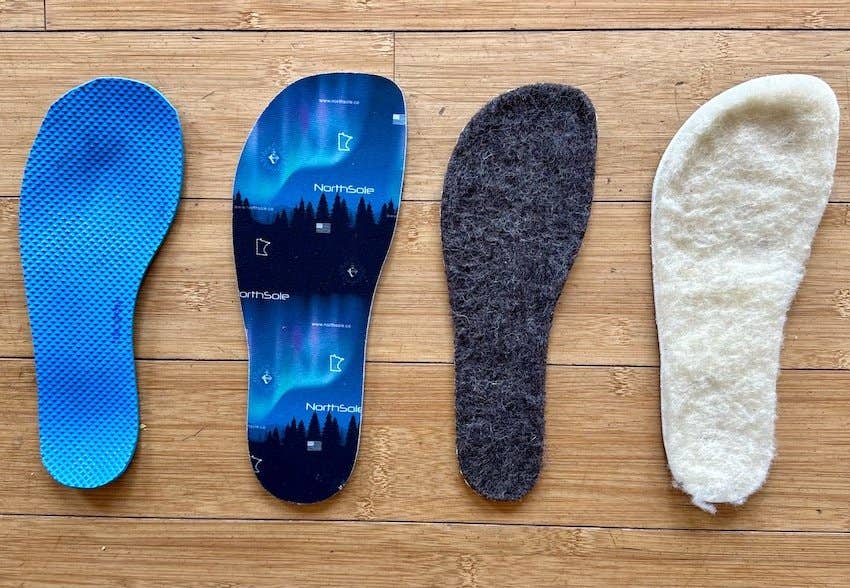A wearable smart insole can track how you walk, run and stand
A solar-powered smart insole tracks your steps, analyzes pressure patterns, and uses AI to detect signs of health issues before symptoms appear.

New solar-powered smart insoles use AI and sensors to track foot pressure, offering early warnings for diseases like Parkinson’s. (CREDIT:CC BY-SA 4.0)
Every step you take can say a lot about your health. A new invention—a smart insole powered by sunlight—now makes it possible to measure this data in real time. This device doesn’t just track your footsteps like a fitness tracker. It captures fine details in how you walk, stand, or move, and uses that information to help catch serious health issues early.
Developed by engineers using cutting-edge materials, the smart insole includes 22 pressure sensors embedded from toe to heel. These sensors track foot pressure as you move and send the data to a mobile phone using Bluetooth. The entire system is powered by solar cells placed on top of your shoe and stores the energy in small lithium batteries. That means it works all day without needing to be plugged in or charged manually.
Researchers say the way you walk—known as your gait—is unique to you, like a fingerprint. By measuring how your feet strike the ground, this smart insole can reveal subtle changes in posture or balance. These changes can be early warning signs of conditions like plantar fasciitis, flatfoot, diabetic foot ulcers, or even Parkinson’s disease.
According to one of the researchers, Jinghua Li, “Our bodies carry lots of useful information that we’re not even aware of. These statuses also change over time, so it’s our goal to use electronics to extract and decode those signals to encourage better self-health care checks.”
The pressure sensors inside the insole use a blend of advanced materials like carbon nanotubes and silicone to capture both static and dynamic motion. This setup offers one big advantage: it works whether you’re standing still, running fast, or walking at a regular pace. Earlier versions of wearable foot tech couldn’t do this well—they often had poor stability, needed lots of charging, or didn’t last long.
To make the data easier to understand, the team built a mobile app that shows a live pressure map of your feet. That means you can literally see which parts of your foot are bearing the most weight at any moment. This can be helpful for people recovering from injuries, dealing with chronic foot pain, or even athletes trying to improve form.
The sensors aren’t just precise—they’re tough too. In lab tests, the insoles went through 180,000 rounds of pressure and bounce-back. Even after that, their performance didn’t drop. Li explained, “The interface is flexible and quite thin, so even during repetitive deformation, it can remain functional.”
Related Stories
The device also includes an AI brain: a support vector machine (SVM) learning model. This part of the system helps classify different types of motion. It can tell the difference between sitting, standing, walking, running, squatting, and even going up or down stairs. That opens doors to many uses—from real-time posture correction to custom physical therapy plans.
This smart insole isn’t just a cool gadget. It holds real medical value. Certain conditions, especially neurological and metabolic diseases, change how a person walks—sometimes subtly at first. For example, Parkinson’s disease often leads to “gait freezing,” a symptom where a person suddenly stops walking mid-step. Stroke patients may put less pressure on one leg, while flatfoot changes the shape and pressure zone of the foot’s arch. Diabetic foot ulcers, which affect many people with diabetes, reduce feeling in the feet and increase the risk of injury.
With this smart insole, those signs can be caught early. Pressure is tracked in real time and mapped clearly on a phone. The system even compares pressure application between walking and running. During a walk, pressure moves from heel to toe in a clear pattern. But during running, pressure hits nearly all sensors at once, and the contact time with the ground is shorter—just one-quarter of the step compared to half during walking.
“Wearable insole-based pressure sensors have shown strong potential for detecting foot and leg issues,” said Li. “But most older designs faced problems with energy use, unstable readings, or weak durability. We wanted to overcome all of those.”
The study behind the smart insole appeared in the journal Science Advances, showing the research passed strong academic review. Its authors believe the system could be on the market in three to five years. Before that happens, they plan to test it more widely across people of different body types, ages, and health backgrounds.
“We have so many variations among individuals,” said Li. “Demonstrating and training these fantastic capabilities on different populations is something we need to give further attention to.”
The science behind the smart insole combines materials, electronics, energy harvesting, and machine learning into one sleek package. The solar panels use flexible perovskite materials, which are lightweight and bendable. They sit on the shoe’s upper surface to get the most sunlight and feed energy into lithium batteries hidden in the insole’s arch. The batteries power the pressure sensors and the Bluetooth module, keeping the system running for long periods.
Each insole is made using a layered design. At the bottom and top are thin films of polyimide. Inside are layers of electrodes and pressure-sensitive materials made of carbon nanotubes, acetylene black, and silicone rubber. This design lets the system bend, twist, or stretch with your foot without breaking.
By adjusting how the materials work together—what researchers call a “nonlinear synergistic strategy”—the system can turn complicated pressure readings into simple, linear electrical signals. That makes the data cleaner and easier to use.
Resistive sensors like the ones used here are ideal for this type of wearable. Unlike piezoelectric or triboelectric sensors that only measure fast movements, resistive ones can measure both slow and fast pressure changes. They’re also more resistant to noise, meaning they’re less likely to give false readings, and they’re easier to hook up to simple electronics.
As the system evolves, researchers believe it could help people beyond medical patients. Athletes could use it to perfect their form. Trainers might use it to design smarter workouts. Even gamers could benefit if the system is connected to virtual reality or motion-sensing platforms.
Because the materials are safe and non-toxic, there’s very little risk in wearing the device for long periods. It’s no more invasive than wearing a fitness band or smartwatch. In fact, it may be even less noticeable since it hides inside your shoe.
This smart insole marks a big step forward in wearable health tech. It’s not just tracking motion—it’s interpreting what that motion means for your health. With durable materials, long battery life, clean data, and AI-driven insights, it could soon change how people stay in tune with their own bodies.
From preventing injuries to spotting disease earlier, the impact could be huge. And unlike bulky machines used in clinics, this system travels with you all day, giving a clearer picture of your real-life habits and risks.
As testing expands and new uses are found, the smart insole may soon become a quiet but powerful companion in daily life—one step at a time.
Note: The article above provided above by The Brighter Side of News.
Like these kind of feel good stories? Get The Brighter Side of News' newsletter.



